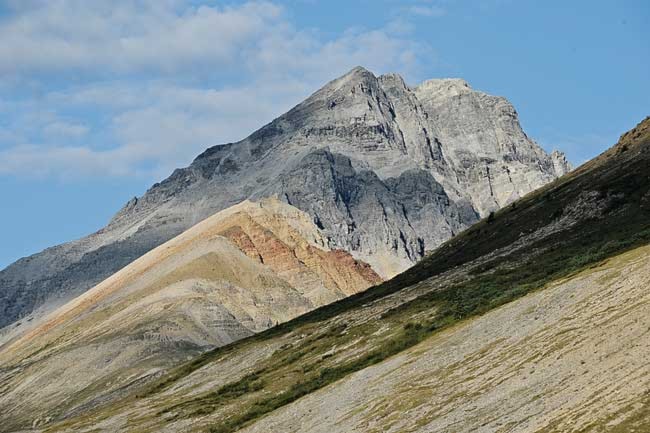First Nations and environmental groups have sued the Yukon government over its new plan for the Peel watershed.
The details of the legal action were announced at a press conference in Vancouver Monday morning, and the statement of claim was filed in Yukon Supreme Court on Monday afternoon.
Thomas Berger, a pioneering lawyer in the area of Canadian aboriginal rights, will lead the case.
“It’s a lawsuit that nobody wanted to bring,” said Berger at the press conference, “but the Yukon government has forced these plaintiffs to go to court not only in defence of First Nations and environmental values in Yukon, but also to uphold principles entrenched in the Constitution.”
The First Nation of Nacho Nyak Dun, the Tr’ondek Hwech’in, the Yukon Conservation Society and the Yukon chapter of the Canadian Parks and Wilderness Society are parties to the suit.
The Yukon government last week implemented a land use plan for the Peel watershed that opens 71 per cent of the area to new staking.
The plan recommended by the Peel planning commission called for 80 percent of the area to be protected from new staking and roads.
“Does that seven years of work and consultation with First Nations and Yukoners mean anything at all?” Berger asked in an interview. “Or was it an interesting exercise that the government of Yukon, at the eleventh hour, can say, ‘No, no, we’re not going to do this?’”
That, he said, is the central question of the lawsuit.
The process for developing land use plans is outlined in the Umbrella Final Agreement signed in 1993 by Yukon First Nations.
This case will be a profound test of whether or not the Yukon government is required to live up to its agreements, said Berger.
The plaintiffs argue in their statement of claim that the Yukon government’s new plan amounts to a rejection of the final recommended plan, and does not follow from the process outlined in the treaty.
Premier Darrell Pasloski was not available for an interview this week, but the Yukon government will likely file a statement of defence in the next few weeks.
In it they will likely argue, as they have in the past on this question, that they have followed the word of the agreements with First Nations, and that their plan is merely a modification of that proposed by the planning commission.
But the Yukon government has been recently warned by Canada’s top court that following agreements in a literal way won’t cut it.
“The treaty will not accomplish its purpose if it is interpreted by territorial officials in an ungenerous manner or as if it were an everyday commercial contract,” wrote Supreme Court Justice Ian Binnie in his 2010 decision regarding a land dispute between Yukon and the Little Salmon/Carmacks First Nation. “The treaty is as much about building relationships as it is about the settlement of ancient grievances. The future is more important than the past. A canoeist who hopes to make progress faces forwards, not backwards.”
There are fundamental differences between the plan announced by the Yukon government last week and that advanced by the planning commission.
The government’s plan focuses on active management. Rather than all-out prohibitions on activities, the government insists that development in sensitive areas can be controlled and that landscapes will be returned to a natural state after industrial work is completed.
The planning commission discovered early on that this approach would please no one.
“It would have involved additional expenses and new ways of operating for industry,” wrote the planning commission in the foreward to its final recommended plan. “It would also have required acceptance and reduced expectations from First Nations, wilderness tourism, the environmental community, and from much of the public. They would have to be patient as impacted sites and roadbeds recovered over time through state-of-the-art restoration.
“No one wanted this. Not industry, not the First Nations, not wilderness businesses, not environmentalists, and apparently, not the Yukon public.”
Indeed, the Yukon government’s plan appears to have few supporters. First Nations and environmental groups say it opens the whole region to development, while industry groups worry that strict environmental conditions will make many projects unprofitable.
It’s up to the courts to decide if the plan is even legal.
The plaintiffs have asked for the court to rule that the planning commission’s recommended plan is binding to the Yukon government.
They will not be asking for a staking ban while the case is before the courts, said Berger.
It will be up to the mining companies to decide if it is worth investing in the area.
“They’ll have to look over their shoulder and decide what’s in their own interest,” said Berger. “But they have lawyers who can advise them, I’m not going to advise them.”
Ed Champion, the chief of the Nacho Nyak Dun warned that his First Nation will not look favourably on any resource company that seeks to explore the area while the future of the land use plan is uncertain.
Noon-hour protests in support of final recommended plan and the legal action were planned for Wednesday in Yukon and N.W.T. communities including Whitehorse, Mayo, Dawson, Haines Junction, Aklavik, Fort McPherson and Inuvik.
A petition on www.avaaz.org calling for the government to protect the Peel had collected 5,000 signatures in just three days as of Wednesday morning.
The issue has received international attention, including coverage in National Geographic.
Contact Jacqueline Ronson at
jronson@yukon-news.com
